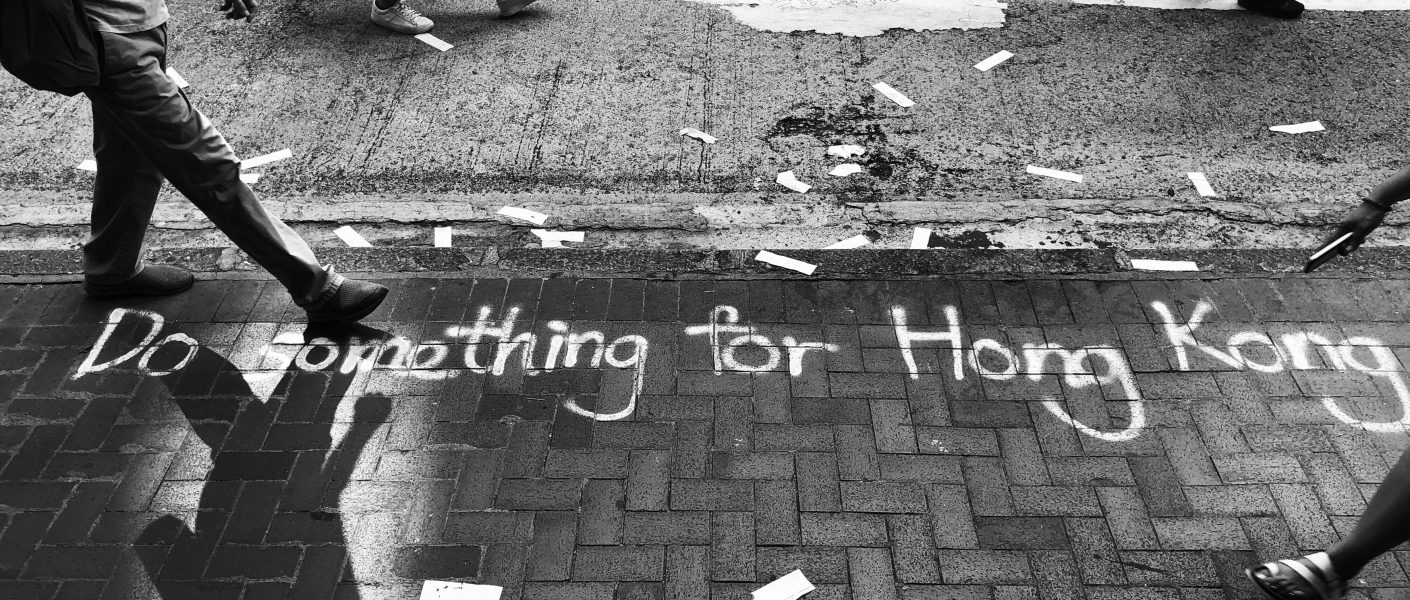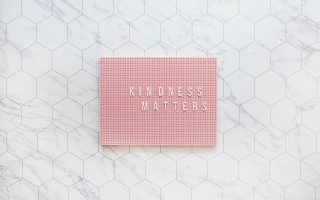Some restaurants remained open. Packed eateries provided solace for Hongkongers seeking somewhere to rest for a moment. One hundred meters down the street, petrol bombs and flash grenades exploded, yet the feeling was surreal and peaceful inside.
Locals ate quietly, and dinner was served as it would be on any other Monday night. In this small pocket of Hong Kong, it’s business as usual. This is the new normal.
November 17, 2019, sparked the beginning of a 12-day siege at the Hong Kong Polytechnic University (PolyU). A group of students barricaded themselves in PolyU to protect it from attacks by the Hong Kong police.
On the streets of Kowloon, pro-democracy protesters created diversions throughout the city. It was hoped that by drawing police away from the university, protesters could make their way to free those trapped inside.
The magnitude of the plan was striking. The chaos on the streets of Kowloon in an attempt to execute this plan was incredible.
Like A Warzone
Over the next 24 hours, the Australian media likened the city to a warzone. The images and footage broadcast to the world do not betray the experience of that night for us.
My boyfriend and I have been to Hong Kong many times before. Of course, we were aware of the political situation in the country. We had been watching this unfold over the past months. This was one night where we were witnessing history — a battle on the streets of Kowloon for autonomy, freedom and identity.
This event carved out another chapter of violence in Hong Kong’s ongoing campaign for freedom, highlighting its people’s relentless struggle for their human rights while appealing to the world for help.
The following day, the situation at PolyU was declared a humanitarian crisis. Fears for the student’s physical and mental health were reported, yet Hong Kong police were not backing down.
The tension was palpable as we made our way out of Kowloon for the day. Dozens of Hongkongers stood on street corners watching masked and black-clothed young people go about their plans.
Silently and methodically, the young people gathered bricks, huge bamboo scaffolding, and even torn up pavement to throw onto the roads. A few people tried fruitlessly to stop them.
These crude roadblocks would later serve to stop police vehicles from entering the streets, invading the districts and making mass arrests, which we didn’t know at the time. All we knew at that moment was that something was brewing.
Around 6 pm, we arrived back in Kowloon to find most train stations and all roads even remotely close to PolyU closed. The streets were swarming with Hongkongers, most just trying to get home after work, like us, trying to figure it all out.
Lying In Wait
We sought to find another way back to our hotel, not knowing the futility of that plan. We followed a small group who had the same idea to walk the outskirts of Kowloon in the hopes of arriving home.
As we rounded a corner, the height and density of the buildings concealed what awaited. Police dressed in full riot gear, gas masks, and batons were poised, ready to yell commands in Cantonese to a small protest group. Police, backed by armoured vehicles and water cannons, held their ground—the heavily armed and well-equipped vs the ingenious.
These protesters were the diversion groups, dressed in black and armed only with umbrellas and pitifully thin face masks. Scattered throughout Kowloon, these groups drew police away from the university and sank back into the city to pop up elsewhere, with any luck.
There was fear and chaos. But, above all else, there was absolute bravery
Tear Gas
We had only seconds to take in this scene before police charged toward the group of protesters and any Hongkongers caught in the crossfire. A gas canister was launched and landed a few metres in front of us. We had to run through it; the momentum of the large crowd behind us provided no other option. My boyfriend yelled to me, “Run! do not open your eyes, do not breathe and don’t let go of my hand!”
Within moments we, along with dozens nearby, were incapacitated. The face masks we rendered useless as chemicals filled our lungs. My boyfriend dragged me into a small alley where dozens of Hongkongers hit by that same blast were reeling in pain.
Our skin burned like it was on fire; our lungs felt like they would explode. Instantly nausea took over.
We were given the grace to recover as police ran by, their attention aimed at those dressed in black. Although we couldn’t see through the pain, we didn’t fear police taking advantage, dragging us off the streets as we struggled to breathe, as they did others. Yet those same Hongkongers whose safety was at risk worried about us: “Where is your hotel?…Oh, you won’t get there tonight… Just stay safe, but run”.
The Long Night Ahead
So, for another six hours, we ran. Hongkongers ran. And riot police followed. A cat and mouse game that twisted and turned and looped through Kowloon.
Stopping in safer places for a short time, it wasn’t long before we heard in Cantonese, “Run, they’re coming!” This cry signalled swarms of Hongkongers to round corners running for safety, followed by protesters who raised the alarm. On their tail were riot police, firing off tear gas and stun grenades indiscriminately into the fleeing crowd.
Being pushed by the crowd, we entered a long and narrow alley where dozens of Hongkongers walked quickly, four abreast. The rhythmic chanting “yut yee! yut yee! “1, 2! 1, 2!” kept the crowd moving in formation, avoiding the very real possibility of a stampede. Even in danger, the order remains.

Through the alley and back on the streets, the bamboo and bricks scattered on the roads now made sense. Despite Kowloon having over two million people, there were no moving vehicles, no road noise or car horns. People who entered the area unwittingly hours earlier were now stranded. Some were asleep in their cars, tellingly unaffected by the chaos around them, stuck in traffic that would not move an inch in the coming hours. They were there for the long haul. Resigned.
There were pockets of eerie silence through the shouting and running, the tear gas and rubber bullets, the water cannons and stun grenades. In this silence sat the feeling of anticipation and anxiety. The people you were running from would soon round another corner. The silence would soon be fractured, sinking into another dark part of the city, awaiting the same disruption.
Repression and Anger
We soon attempted another way around the city via the Promenade. The haze of tear gas floated ghostly over the river in large plumes, burning our eyes.
Ahead, the scene was intense. This protest group was large, as was the group not active in protest. Riot police watched the growing crowd from the other side of a broad roadway covered in bricks. The protesters, prepared with hard hats, umbrellas and gas masks, taunted police.
The feeling was different here; it was hostile, antagonistic, and purposeful—the feeling from months of repression. There was anger.
Reading the crowd, our exit was swift. Moments later, the scene erupted. The noise of tear gas, rubber bullets and frantic escapes gave away the collapse of the standoff. Once again, the remaining fighters dismantled to pop up elsewhere and start again.
Finally, for us, around 2 a.m., the chaos on the streets of Kowloon was beginning to calm.
After a cautious assessment, we walked toward the police telling them where we were trying to go. They radioed another group advising them to let us by; our hotel was only a short distance.
Ahead, we saw two heavily armed riot police standing in an archway, watching us. As we approached arms in surrender, another officer emerged. Then another and another. Finally, a dozen officers stood before us as we came closer, pathetically tired, having weaved our escape through Kowloon for over 35 km.
Back To Safety
Arriving at our hotel, we saw the aftermath of the street battle that raged for hours near PolyU. The road was black from the fire of the petrol bombs.
The torn-up streets were littered with unadorned hard hats; broken umbrellas, used gas canisters and black face masks. There was blood.
Directly outside our hotel was a police water cannon vehicle. Its wheels blew out presumably by a petrol bomb, rendering it useless. Other than the police, no one else remained. It was desolate, haunting, and it felt exhausting.
That night, over 1,400 tear gas canisters and over 1,300 rubber bullets were fired by Hong Kong riot police at their own people. More than 1,100 arrests were made. Over 200 PolyU protesters were trapped inside the university, some risking their lives by ziplining to supporters waiting below. Others attempted desperate escapes through sewer systems.
When police eventually entered PolyU, they discovered an estimated 4,000 prepared petrol bombs. Those young people were in for the fight of their lives.
This was one night for us. This has not ended for Hongkongers who defend their country and their freedom with their lives.
We were privileged to witness the bravery, compassion and absolute relentlessness of the young men and women fighting for Hong Kong and those who continue to do so.
For those men and women who wonder if they will be arrested for defending their human rights, they remain in Hong Kong, continuing their fight.
We got to come home.
First published in The Bigger Picture on November 3 2020. https://medium.com/bigger-picture
Photos by
Pop & Zebra on Unsplash; S. Schneider


